Step into a world of artistic expression and creative fun as we explore the feather-filled universe of Turkey Coloring Pages. With lots of fun designs, these pages provide the perfect canvas for both children and adults to unleash their imagination and dive into the wonders of coloring. Whether you are seeking an educational activity, a unique form of artistic expression, or inspiration for seasonal decorations, these coloring sheets promise endless hours of enjoyment and offer a fantastic way to celebrate the spirit of Thanksgiving and beyond.
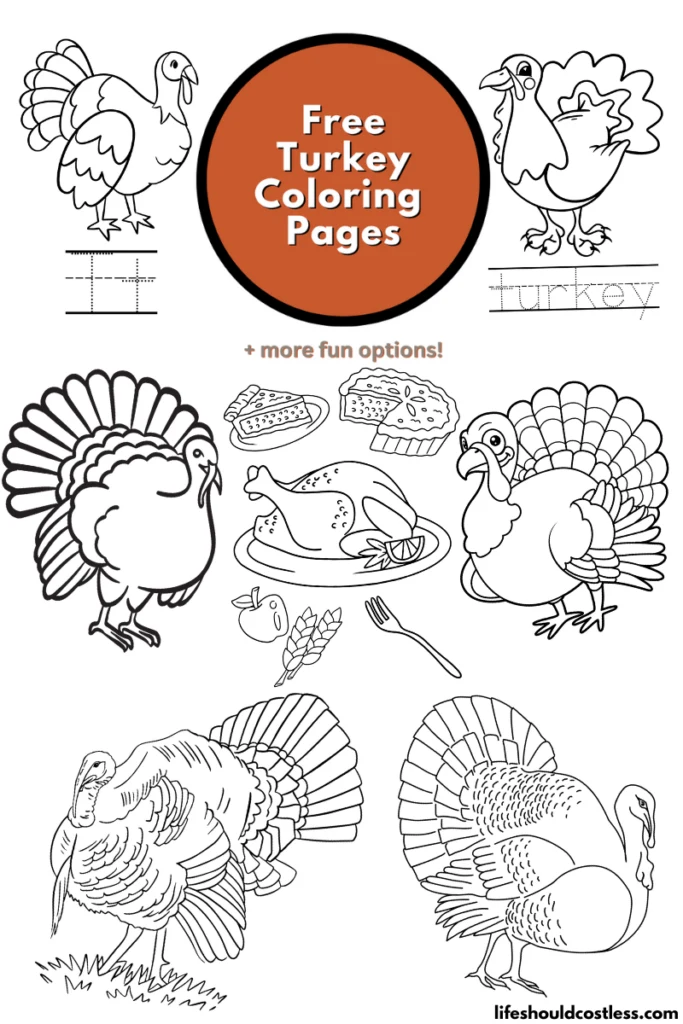
So, grab your coloring tools and let your creativity take flight on this vibrant journey together!
Simply choose the design that appeals to you, download the free PDF template, print it, and enjoy coloring to your heart’s desire.
Alternatively, you can use the designs as embroidery patterns or draw inspiration for fine line tattoos.
Turkey facts
For those who are new to my coloring pages, it’s worth mentioning that I enjoy providing you with the opportunity to learn about the subject, allowing you to seamlessly turn it into an educational experience as you dive in.
So, let’s get started on this exciting journey!
Here are lots of fun and interesting, simplified, facts about turkeys (my reference source can be found here):
- Wild Turkey Species: Turkeys belong to the genus “Meleagris” and there are two main species: the Wild Turkey (Meleagris gallopavo) and the Ocellated Turkey (Meleagris ocellata). The Wild Turkey is native to North America and is the one most commonly associated with Thanksgiving.
- Distinctive Features: Adult male turkeys, known as toms or gobblers, have a striking appearance with a fan-shaped tail, iridescent feathers, a fleshy wattle hanging from their throat, and a prominent snood (a fleshy protuberance) that dangles over their beak.
- Turkey and Thanksgiving: The association between turkeys and Thanksgiving in the United States can be traced back to the 17th century when the Pilgrims and Native Americans shared a feast to give thanks for a successful harvest.
- Social Birds: Turkeys are highly social creatures and roost in large groups, called flocks, for safety and companionship. They communicate through various vocalizations, including gobbles, clucks, and purrs.
- Flying Abilities: Despite their large size, turkeys are surprisingly agile flyers. They can fly at speeds of up to 55 miles per hour for short distances, though domesticated turkeys are generally heavier and not as skilled at flying as their wild counterparts.
- Turkey Trot: The term “turkey trot” refers to the comical running style of turkeys on the ground. They run in a bouncing, jerky manner, which is both amusing and efficient for evading predators.
- Courtship Displays: During the breeding season, male turkeys perform elaborate courtship displays to attract females. This includes puffing up their feathers, spreading their tail feathers in a fan-like display, and strutting around while making gobbling sounds.
- Unique Snood: The snood of a turkey is a fleshy protuberance that extends from the base of the beak. Its size and color change with the turkey’s mood. A longer, more colorful snood is a sign of a healthy and dominant male.
- Sleeping in Trees: At night, wild turkeys prefer to roost in trees to stay safe from predators. They fly up to tree branches using their strong leg muscles and wings and huddle together for warmth and protection.
- Changing Feather Colors: The iridescent feathers of male turkeys change color depending on the angle of the light. This stunning display helps attract potential mates during courtship rituals.
- Turkeys and Benjamin Franklin: Benjamin Franklin once praised the turkey, advocating for it to be the national bird of the United States instead of the Bald Eagle. He admired the turkey for its intelligence and resourcefulness.
- Spiral Patterning on Feathers: If you look closely at a turkey’s feathers, you’ll notice a unique spiral pattern called “poults.” These patterns serve as a natural camouflage and help turkeys blend into their surroundings.
- Prehistoric Birds: Turkey-like birds have been around for millions of years. Some of their prehistoric ancestors, such as the “Meleagris oeningensis,” lived in what is now Germany over 10 million years ago.
- Ocellated Turkey: The Ocellated Turkey is a species found in the Yucatán Peninsula of Mexico and parts of Central America. Unlike its North American cousin, it has vivid, iridescent plumage with striking eye-shaped spots, known as ocelli.
- Turkey Fossil Discoveries: Fossil evidence suggests that turkeys existed on the continent of North America for over 5 million years.
Turkeys are fascinating creatures with a rich history and unique characteristics.
Whether you encounter them in the wild or color them on the page, these birds are sure to capture your curiosity and imagination.
We learned a lot about turkey’s but there is much more to know about them.
If you would like to continue in your turkey-knowledge seeking, here are some other reputable resources to learn about them while coloring:
- https://kids.britannica.com/kids/article/turkey/353876
- https://kids.nationalgeographic.com/geography/countries/article/turkey
- https://www.smithsonianmag.com/science-nature/14-fun-facts-about-turkeys-665520/
- To see all of my free printables, go here.
- To see an alphabetized index of all of my coloring pages, go here.
- To see all of my Animals coloring pages, go here.
- To see all of my Birds coloring pages, go here.
- To see all of my Autumn/Fall related coloring pages, go here.
- To see all of my Thanksgiving coloring pages, go here.
Tips for coloring
Coloring a picture of a turkey can be a fun and rewarding activity.
Here are some of my best tips and tricks to help you create vibrant and eye-catching turkey artworks:
- Reference Images: Gather reference images of turkeys, both wild and domesticated, to observe their natural colors and patterns. This will give you a better understanding of the bird’s anatomy and help you make informed color choices.
- Coloring Tools: Choose your coloring tools wisely. Colored pencils, markers, watercolors, and pastels are all great options. Colored pencils allow for precise details, while markers provide bold and vibrant colors. Experiment with different media to find the one that suits your style best.
- Layering: For colored pencils and other translucent media, layering is key. Start with light strokes and gradually build up the colors, adding depth and dimension to the turkey’s feathers and body.
- Feather Texture: To create more realistic feather textures, use short, directional strokes. Study the feather patterns of turkeys and replicate them on your coloring page. Vary the pressure on your coloring tools to achieve a textured look.
- Color Blending: Blending colors is crucial to achieve a smooth and natural appearance. Use a blending tool (such as a blending pencil, colorless blender marker, or cotton swab) to blend colors together seamlessly. This softens harsh edges and adds a professional touch to your artwork.
- Color Schemes: Consider using various color schemes to make your turkey stand out. Traditional autumn colors like browns, oranges, yellows, and reds work well, but don’t be afraid to experiment with unique color combinations for a more creative approach.
- Highlight and Shadow: Add depth and realism to your turkey by incorporating highlights and shadows. Identify the light source in your image and imagine how it would hit the turkey’s body and feathers. Use lighter shades for highlights and darker shades for shadows.
- Eyes and Beak: Pay special attention to the turkey’s eyes and beak. A well-defined eye can bring life to your artwork. Use darker colors for the beak and add a touch of gloss to give it a shiny appearance.
- Background: Consider the background of your turkey drawing. It can complement or contrast with the bird’s colors. A simple background can make the turkey pop, while a more detailed one can add context and interest.
- Protect Your Work: If you’re using markers or watercolors, test your colors on a separate sheet to ensure they won’t bleed through. Also, consider placing a scrap paper under your hand to avoid smudging the colors on your drawing. Or, you could even just make sure to wash and dry your hand periodically as you color.
- Practice and Patience: Coloring turkeys, especially with intricate patterns, requires patience and practice. Don’t rush the process; take your time to achieve the desired results.
- Add Accents: Once you finish coloring, you can add some extra flair to your turkey. Consider using metallic gel pens or white gel pens to add highlights or small details like reflections in the eye.
Remember, coloring should be a relaxing and enjoyable experience.
Embrace your creativity and have fun bringing your turkey to life with beautiful colors and artistic techniques!
Options For Printing:
Letter T is for turkey writing practice worksheets
*My letter T is for turkey coloring sheet printables are specifically designed to be used in a classroom setting, they are the only printable options on this page that do not need written permission to use in a public setting, but please send the link to this post along if anyone asks you where you got them. Thank you!
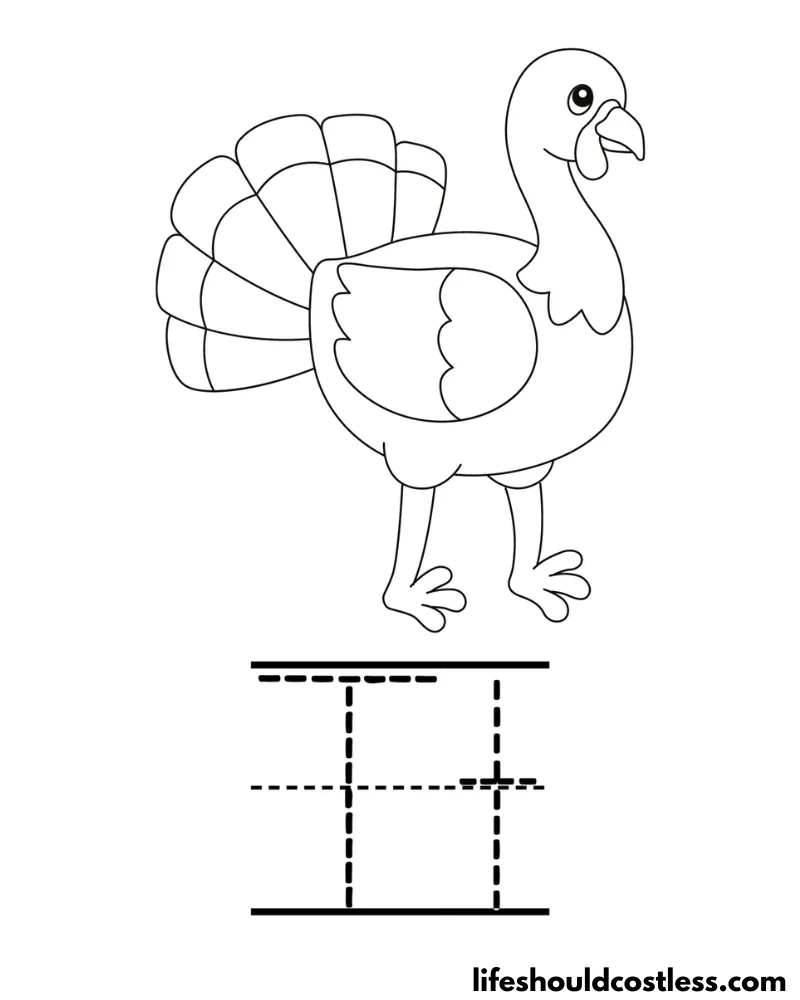
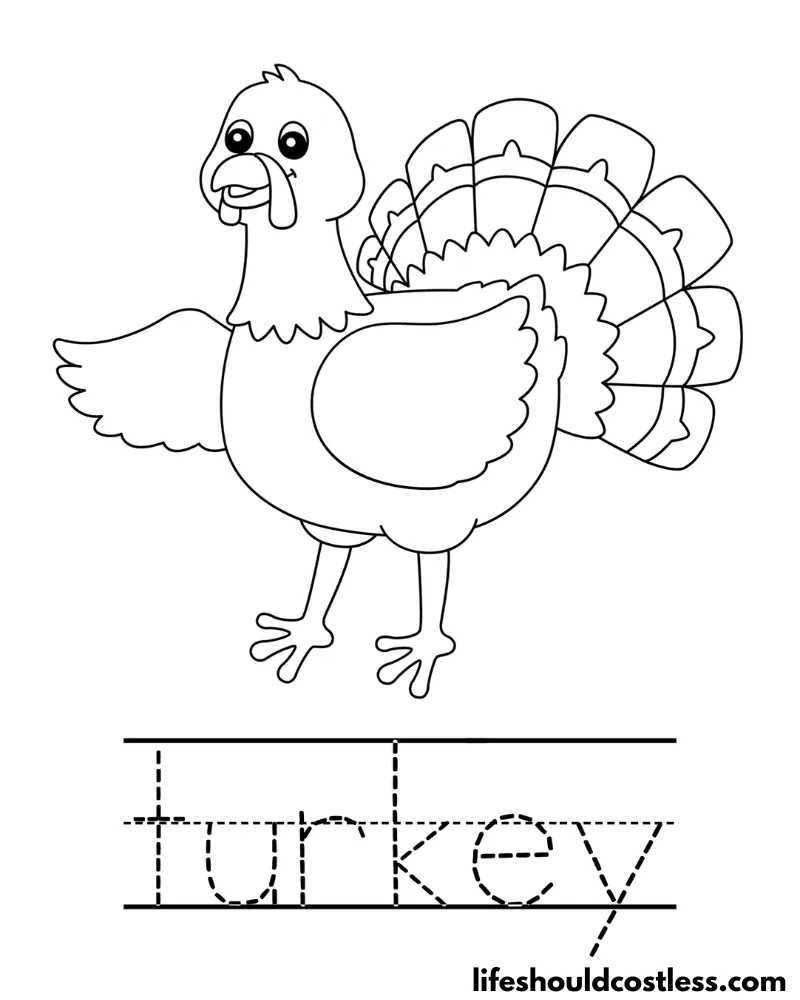
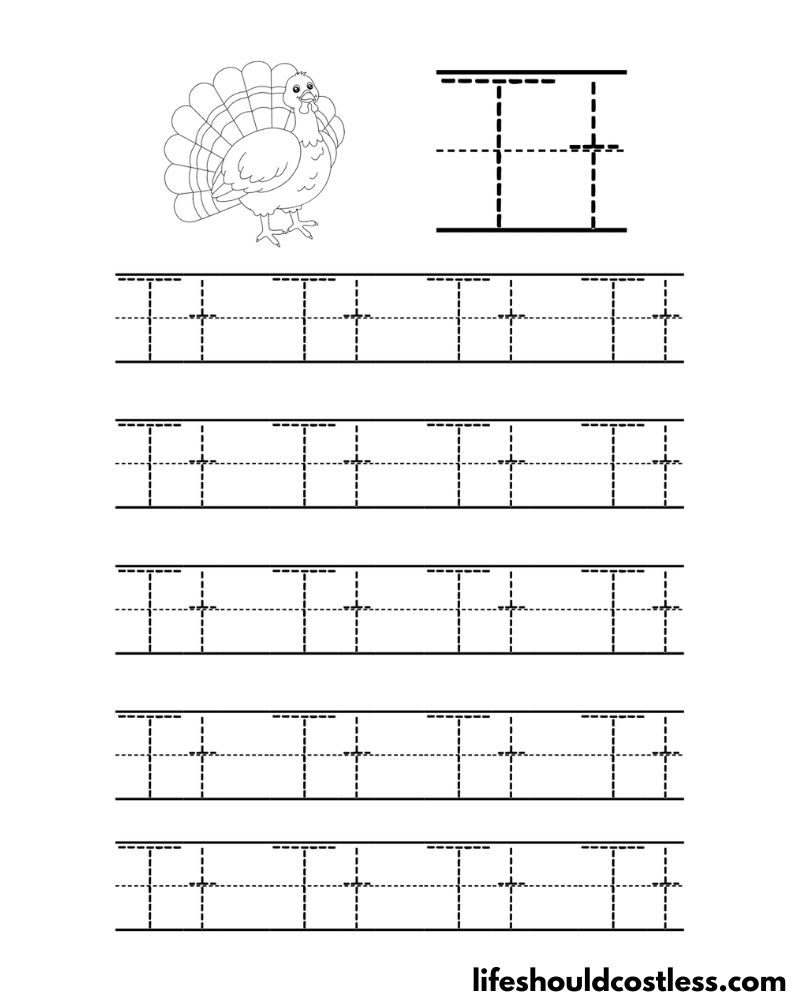
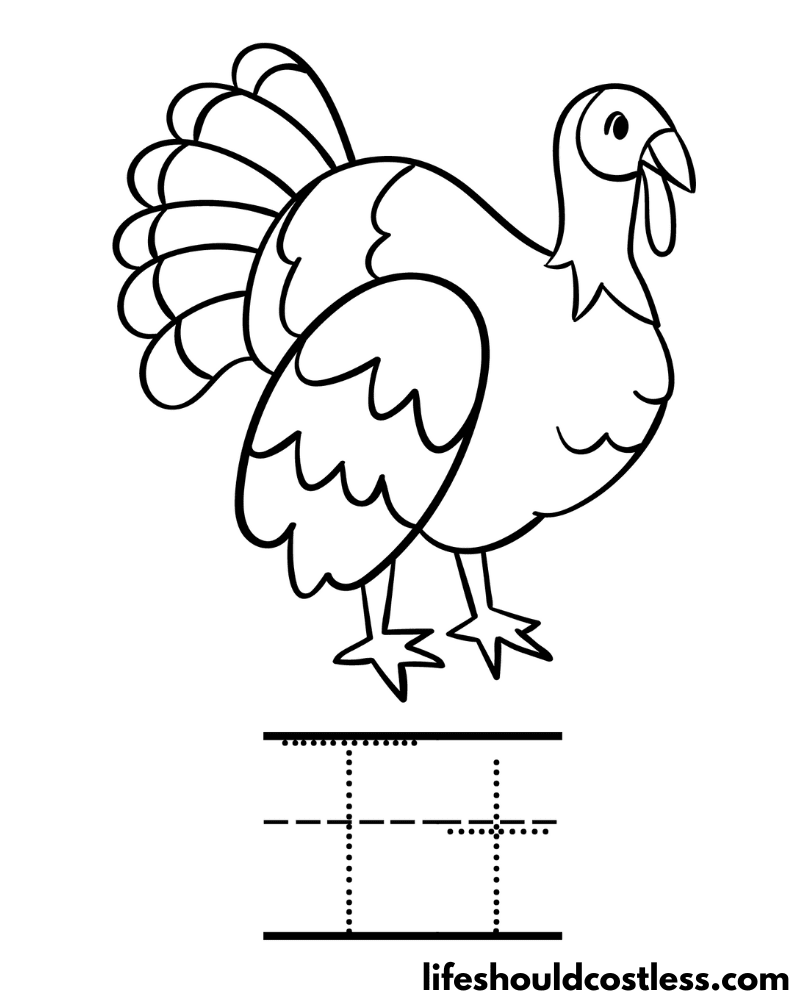
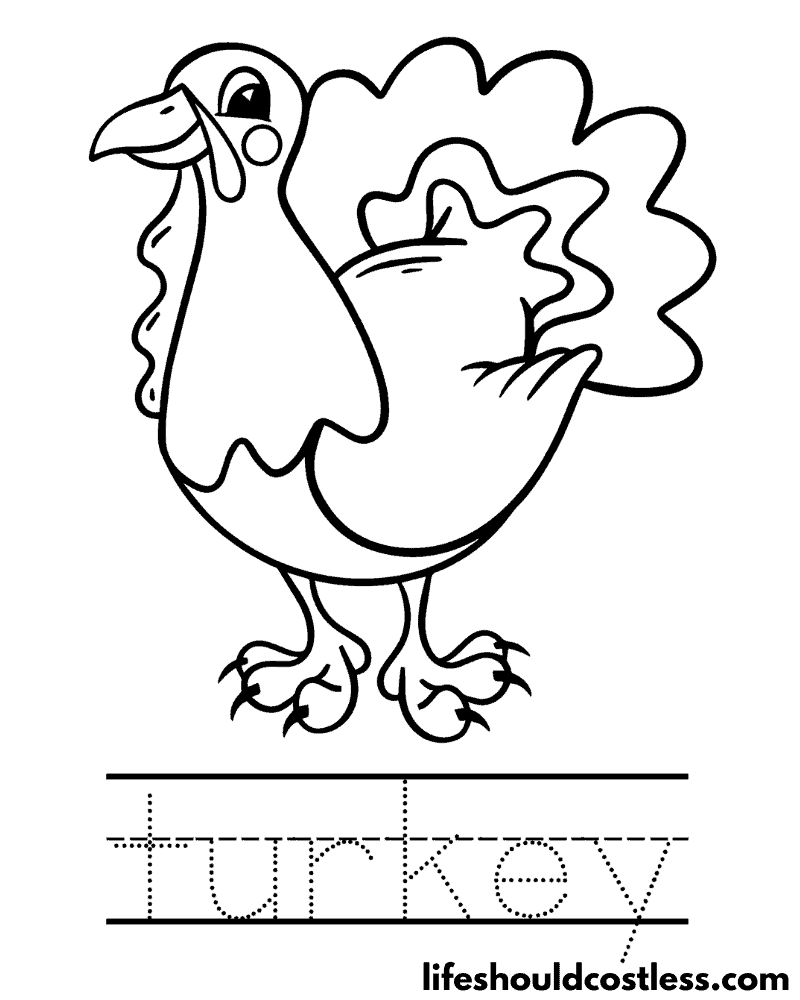
Various Turkey Designs
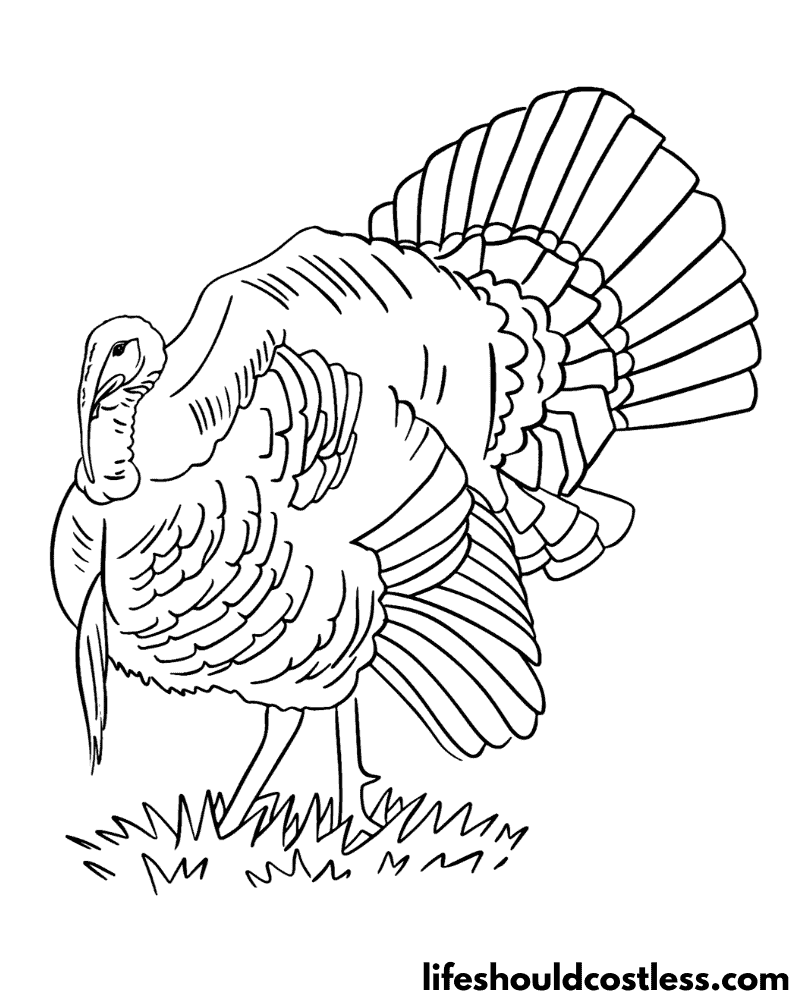
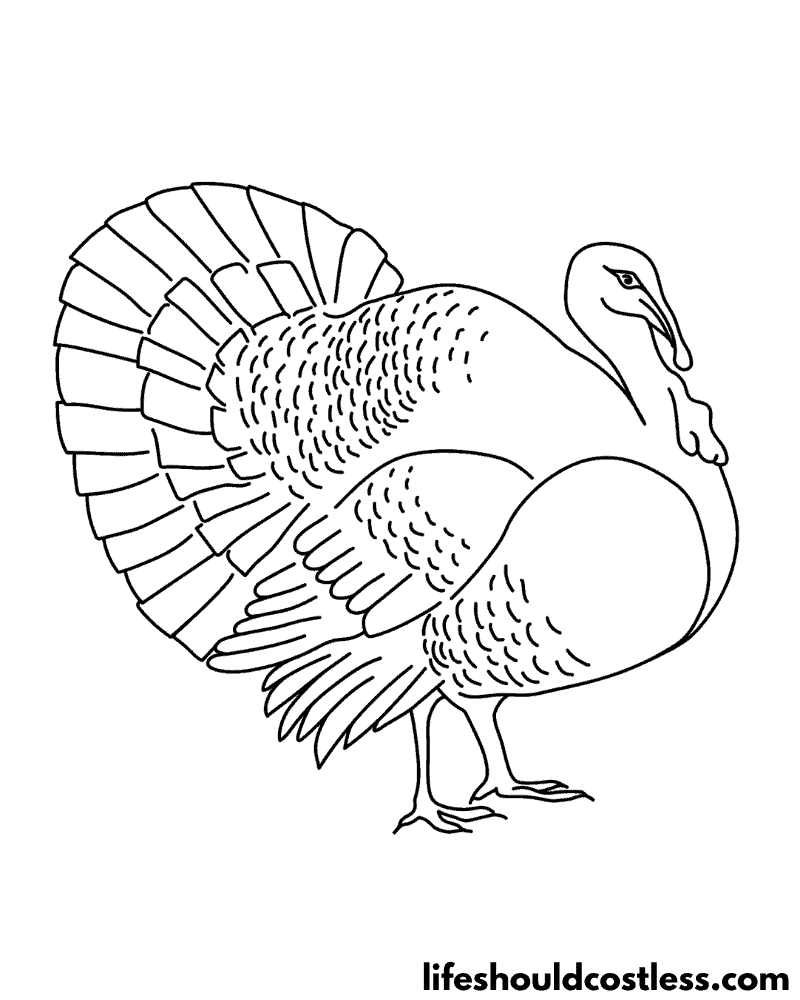
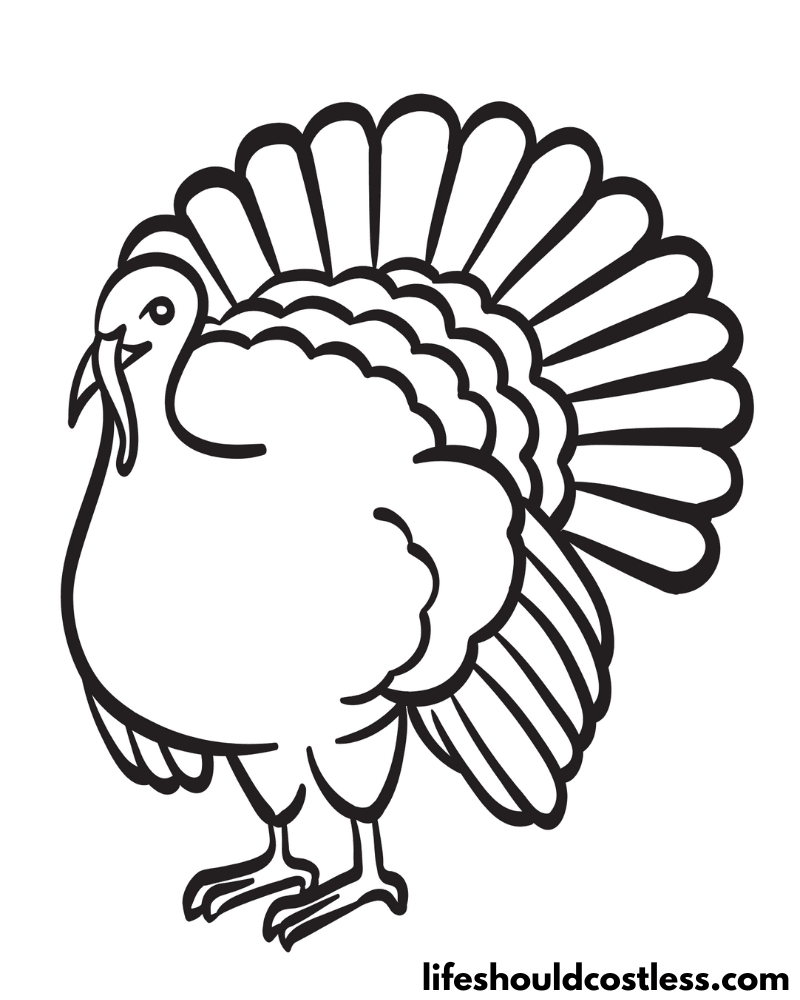
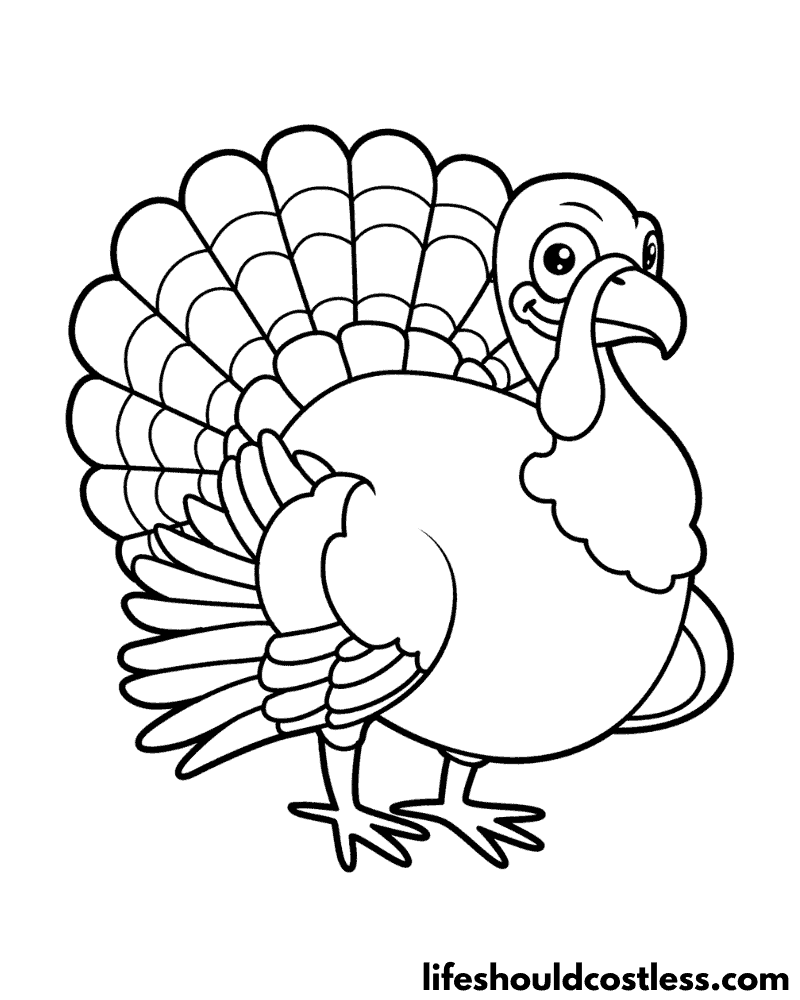
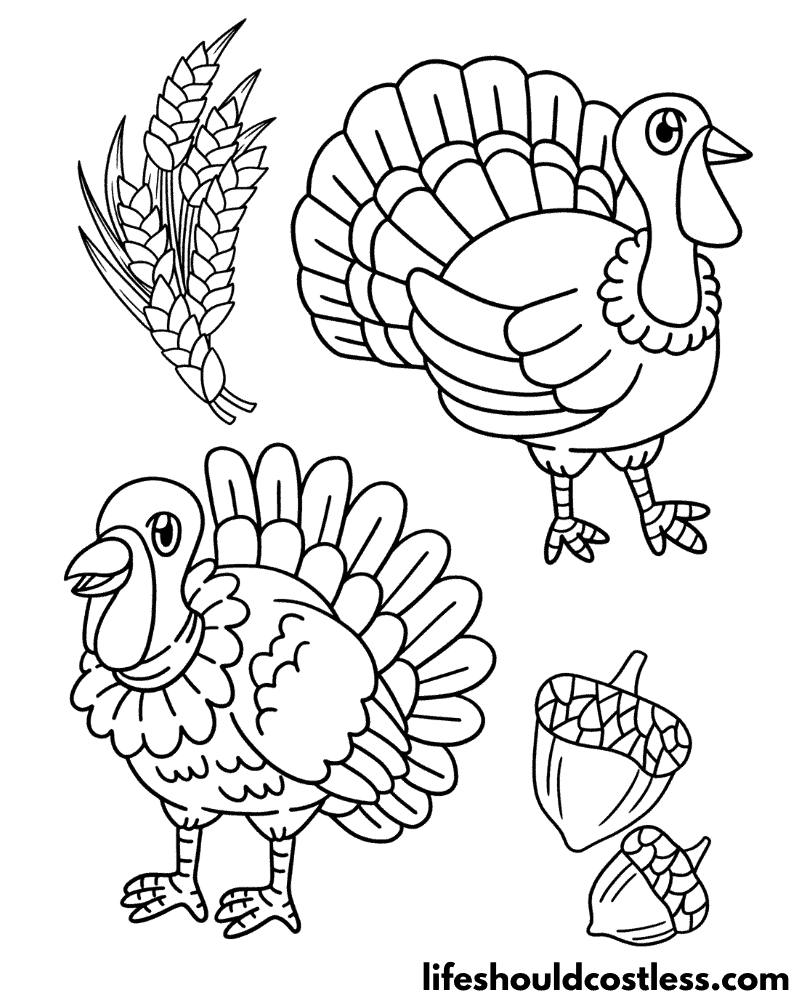
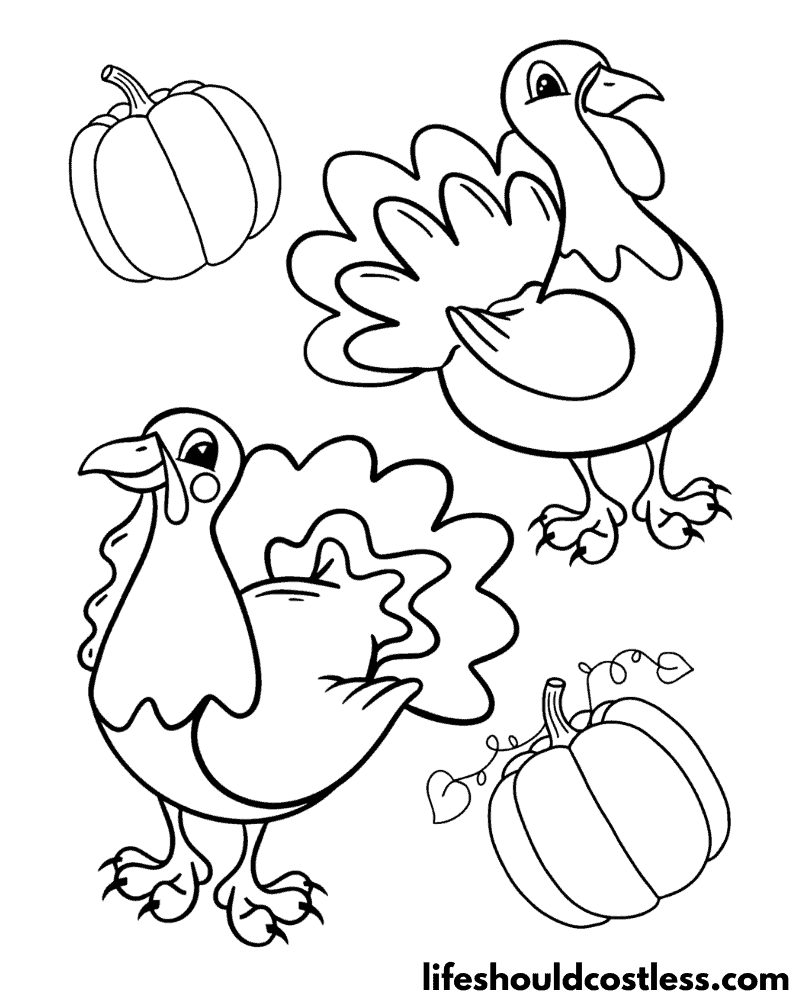
Thanksgiving Turkeys
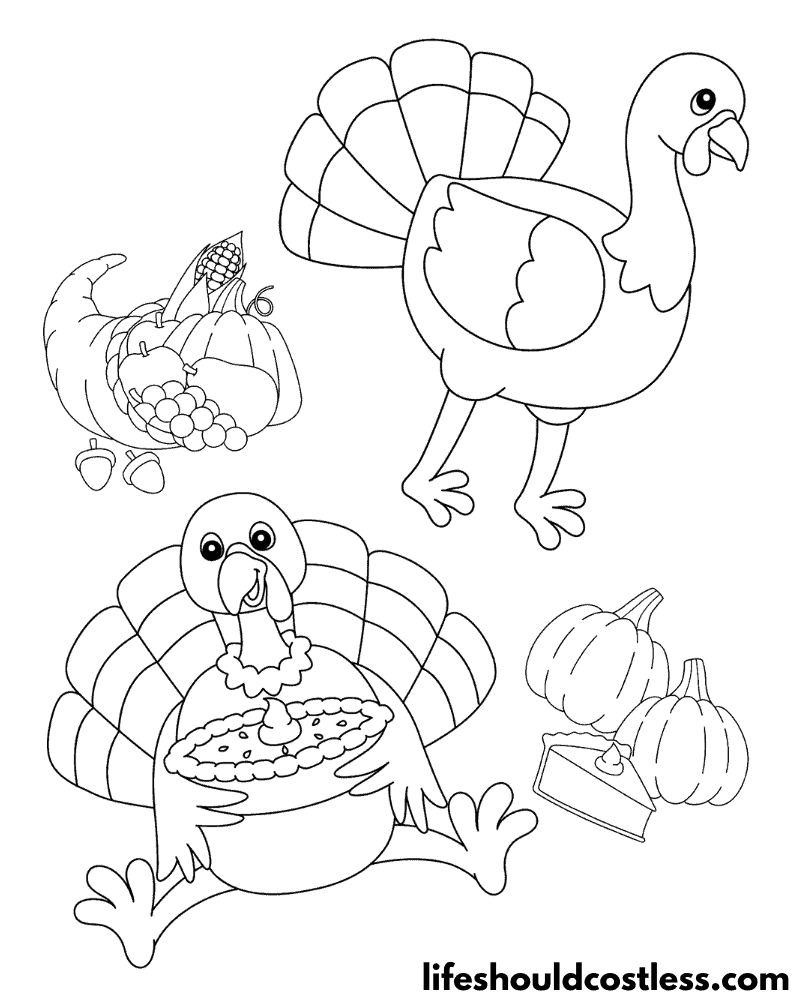
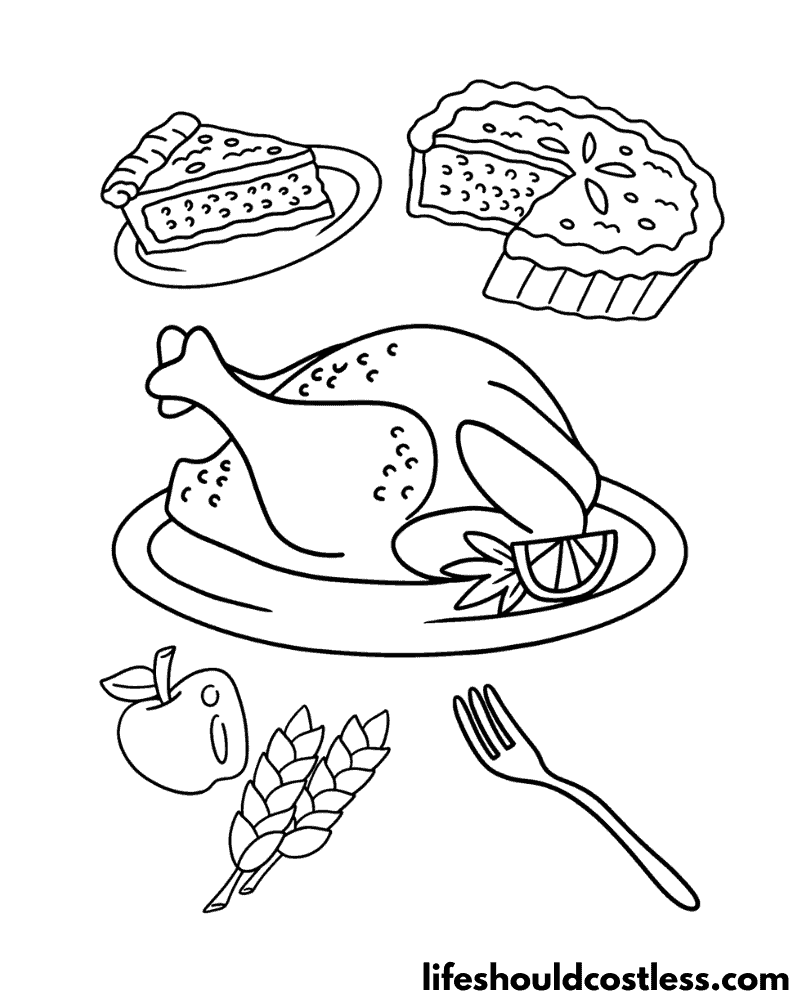
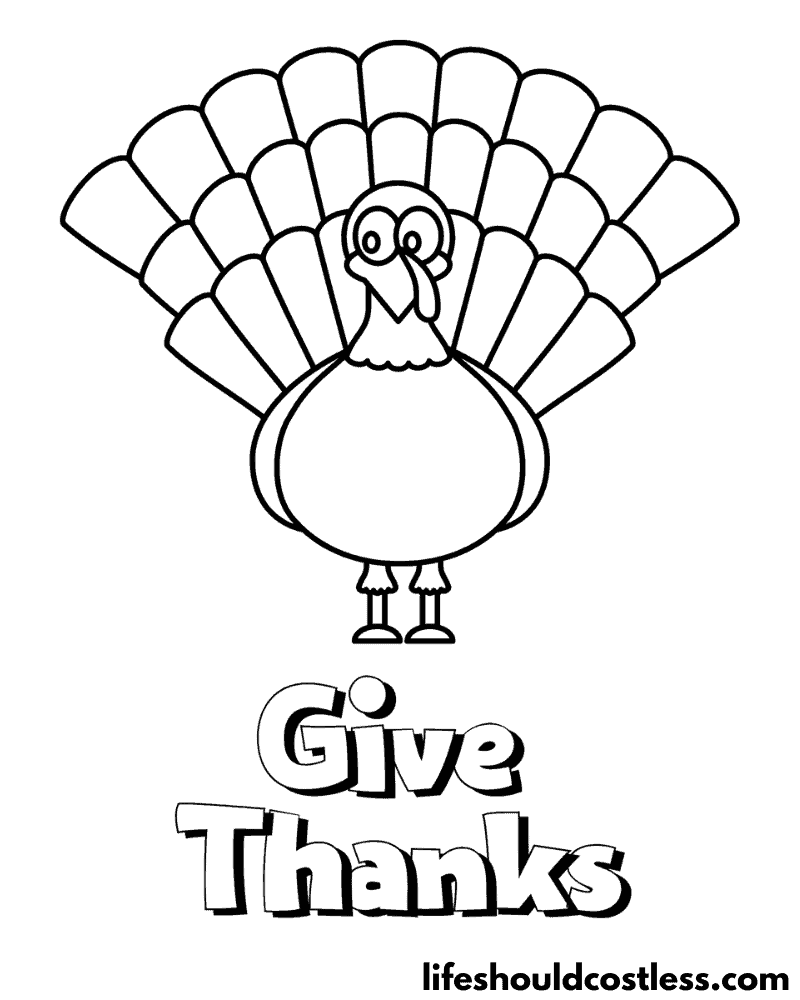
FAQ’s
Real turkeys, specifically the Wild Turkey (Meleagris gallopavo), display a range of colors on their feathers and body. Here are the typical colors you can find in a wild turkey’s plumage:
Body Feathers: The body feathers of a wild turkey are predominantly dark brown or black, with a glossy iridescent sheen. This coloration helps them blend into their natural forested habitats.
Wings: The wings of a wild turkey have a mix of dark and light feathers. When folded, the wings may appear mainly dark, but when spread, you can see a combination of brown, black, and white.
Tail Feathers: One of the most distinctive features of a male turkey (tom) is its fan-shaped tail. The tail feathers are a mix of rich copper, bronze, and greenish-black. These colors create a striking display during courtship rituals.
Feather Tips: The tail feathers of both male and female turkeys have lighter-colored tips, known as “tipping” or “edging.” This creates a barred or banded appearance.
Head and Neck: The head and neck of a wild turkey can range from blue-gray to red, with a characteristic fleshy wattle that hangs from the throat. The male’s head can change color with mood, becoming more vibrant during courtship displays.
Snood: The snood, which is the fleshy protuberance that hangs over a turkey’s beak, can range in color from pinkish to red, and it can change size and color depending on the turkey’s emotions.
Legs and Feet: The legs and feet of wild turkeys are usually a grayish or pinkish color, with sharp, powerful talons that help them scratch for food and roost in trees.
It’s important to note that the colors of wild turkeys can vary slightly among individuals and subspecies.
Additionally, domesticated turkeys (those raised for consumption) can have different color patterns and are often bred for specific traits, which may deviate from the natural colors of their wild counterparts.
*I will add more turkey colour / color questions and answers as the questions get sent to me.
Conclusion
As we come to the end of this delightful journey through the world of turkey coloring pages, we’ve explored the artistic joy and educational opportunities these pages offer.
From the magnificent plumage of wild turkeys to the diverse colors of domesticated breeds, our coloring adventure has allowed us to appreciate the beauty and intricacies of these remarkable birds.
Through your creativity and choice of colors, you’ve breathed life into these pages, turning them into unique masterpieces that celebrate either, or both, the spirit of Thanksgiving and the wonders of nature.
The process of coloring turkeys has not only brought joy and relaxation but also presented an opportunity to learn about these fascinating creatures.
As we conclude, let’s remember that the magic of coloring extends beyond the artistic world.
It is an activity that transcends age and skill, fostering creativity, mindfulness, and a sense of accomplishment.
So, whether you’re an aspiring artist, a seasoned colorist, or simply seeking a moment of relaxation, coloring turkeys provides an engaging and fulfilling experience for everyone.
We hope you’ve enjoyed this journey as much as we have, and may your colored turkeys continue to grace your world with beauty and warmth.
As you embark on future coloring endeavors, remember to embrace your imagination, express your creativity, and savor the joy that coloring brings to your heart. Happy coloring!
Thanks so much for stopping by my blog and supporting my endeavors to make people’s lives a little easier/better/more affordable.
If you liked this post, or found it helpful in any way, please make sure to share it with your family, friends, and co-workers via social media.
Or you could even send them the direct link via email. Whichever way you choose to spread the love, I super appreciate it! ~Sarah
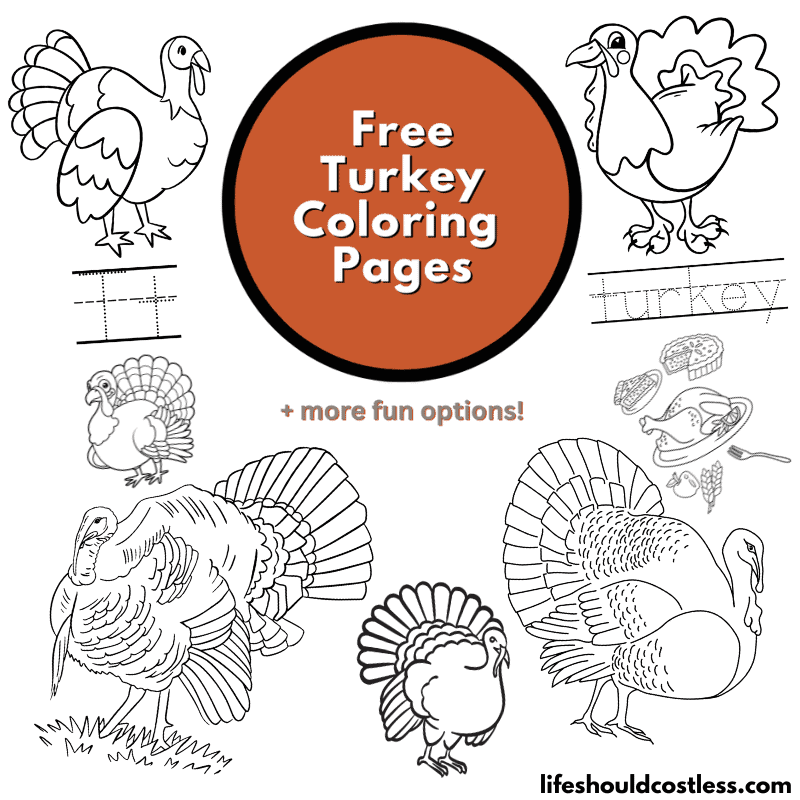
How To Follow & Support This Site
- If you would like to subscribe to my email list, go here.
- Make sure to follow along via social media, by going here.
- If you would like to learn how to really show your support to this site (at no cost to you), go here.
- If you would like to make a direct donation to the site, go here.
Check out my other free printables
- To see all of my free printables, go here.
- To see an alphabetized index of all of my coloring pages, go here.
- To see all of my Animals coloring pages, go here.
- To see all of my Birds coloring pages, go here.
- To see all of my Autumn/Fall related coloring pages, go here.
- To see all of my Thanksgiving coloring pages, go here.
Otherwise, here are direct links to several of my other related posts that you’re also going to love:
Animals / Birds
Animals / Mammals
Animals / Insects
Fall Coloring Pages
Halloween
Thanksgiving
Winter Coloring Pages
Christmas
New Years
St. Patrick’s Day
Valentine’s Day
Spring coloring pages
Easter
Summer coloring pages
Other good resources for a printable turkey
- https://www.colorwithfuzzy.com/turkey-coloring-pages.html
- https://clipart-library.com/turkey-pictures-to-color.html
- https://www.coloring-page.net/turkey.html
*This post was originally shared to this blog on 07/27/2023, and has since been updated to improve user experience, add video instruction, as well as to make it as shareable as possible across the social medias.
**Please note that I do try my hardest to provide factual, but easy to understand, information about each topic. If you notice a discrepancy in my coloring pages, facts, or see something that you deem “misinformation/incorrect” please make sure to notify me about it. I would prefer that you send me an email with a link to a more reputable resource on that subject, so that I can correct it as soon as possible. Thanks so much for helping this site become the best that it can be!
***Resources from djinkers were used in the production of this article.
